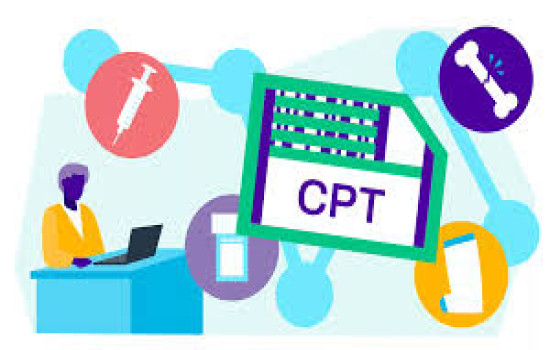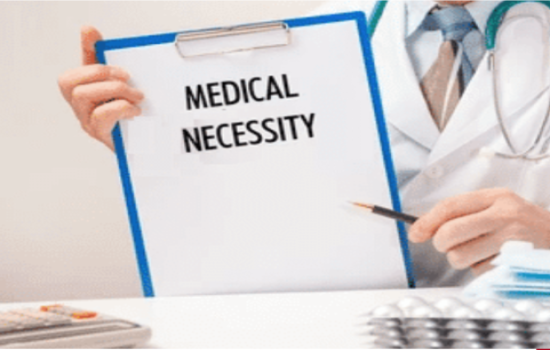Published by: Administrator

Documentation of patients encounter should always be a unique document. In other words, when we talk about cutting and pasting and cloning and all of that we need to know what is going on with the patient today, and one of the things that I heard a lot of at this conference was the lack of chief complaint of the patient, the lack of a good HPI of the patient. In other words why is the patient here today and what's going on with them. And that sort of sets the tone for the visit. If it says recheck meds doesn't really tell you anything about the patient at all. I was looking at a note the other day and it said that the patient had come in for a recheck of their COPD. They've been to the rheumatologist and the rheumatologist said this and the rheumatologist changed that and the rheumatologist ordered tests and the rheumatologist, we're going to see him back in a week or two and then the next thing I knew I'm through the rest of the note and with the assessment and plan and I'm like what about the COPD. So we want to make sure that before we even get into the problem areas that we're not creating a problem by not reflecting the current condition of the patient, what's going on with that patient. Then we put in the work that was done today, we can reference old work, we can bring old work into the record, but we do have to show that it was old work and not make it seem like it was new work. So when we look at what is the definition of cut and copy paste, basically as we know just from a word document from a presentation I copied and pasted that quote from the Internet and put it into this presentation. So copy and paste or cut and pace is not necessarily a horrible thing, it's just a matter of when should we be using it and as we see in human computer interaction they're related in essence to a command where we have someone taking information, transferring data and information from one place to another or from one record to another.
And one of the problems that we have is up until fairly recently that information once it was cut and pasted seems like original information and that's where we run into problems. So copy and paste or cut and paste sometimes it's cloning, we have pre populated templates or pull forward all of that is sort of has the same meaning where we have information that is being put into the record that is not original work that was documented, it is something that was documented previously. We know that we have to remember with our medical records no matter what that medical necessity has to be met. Now when you look at your audit sheet, your audit sheet you know prior to the changes for office for 2021, but your general office she has got a bunch of bullet points you're going to do check, check, check, there's not a box that says chief complaint most of the time and there's certainly most of the time isn't a box that says is this sort of service medically necessary. And that's one of the things that we have to watch out for is all this work can be done but if we don't show that it was medically necessary then our payment is in jeopardy. And this is from the Medicare curious manual reminding us also that the volume of documentation you know just because you have a five page note doesn't mean it's a level five, a four page note is not a level four, although certainly I have providers that believe that that is true.
The documentation needs to support the level of service build at all times and that's part of that whole medical necessity piece. And then the other thing is the service should be documented as soon as practical after it's provided in order to maintain an accurate medical record. Different players and carriers have their standards I know that our Mac here in Michigan on the medical director has said no more than two days. So I would ask the hypothetical question how many of you have records in your practice right now that are more than two days old that are incomplete and if you lived in Michigan and that was a Medicare patient you would have a problem. So in our electronic health record world one of the problems that we saw was that um I want to not be political here. When the Obama administration came in, they commissioned a five-year study to look at the interoperability and feasibility of electronic healthcare records, and so they were supposed to study just that and then six months in they said okay let's go let's implement it. And so we had none of the rules in place that we might otherwise normally have because it was just moved so quickly into its implementation and because of the incentive payments for using electronic records many provider offices went to them very, very quickly and found that cutting and pasting was a really helpful tool to this some laborious new process that we have in having to type everything into the record or pulling forward information or information that is pulled forward by the system, and that's a problem. You know, you can't open up a record and have it be complete.
I worked with a particular practice that had a problem with billing of visits where the patient hadn't come in the patient had cancelled the visitor had been a no show and like how is that happening. And you know did some checking around to the jobs in the office and found out that one of the [indiscernible] [00:08:37] in order to try to get ahead would go in and prep “the chart for the provider.” And in doing so she would in essence look at the schedule why is the patient coming in, she put that in the chief complaint. She pulled forward all of the review of systems, past family, social history as appropriate, pulled forward the last physical, pulled forward the last assessment and plan and that way there the doctor was already to look at it. And what would happen at the end of the day if the patient didn't show and she didn't remember to delete that record that record would close out with the end of work day come into a cube it would get built out on many occasions. So there's an entire and with good intentions, there's an entire record that in essence was false and that's fraud and that's going to get to in a lot of trouble. So make sure that your system doesn't allow you to pull forward so much information you end up with a visit when the patient has never been seen that pre-population of data I know that they use this a lot in emergency room settings where they have used to be their T-notes. Patient comes in with a sore throat, we pull out the T-note for sore throat and it tells us what we need to do, we can have the same kind of information happen now with electronic records, patient comes in with a sore throat it's going to repopulate a bunch of information.learn more...
[....]




